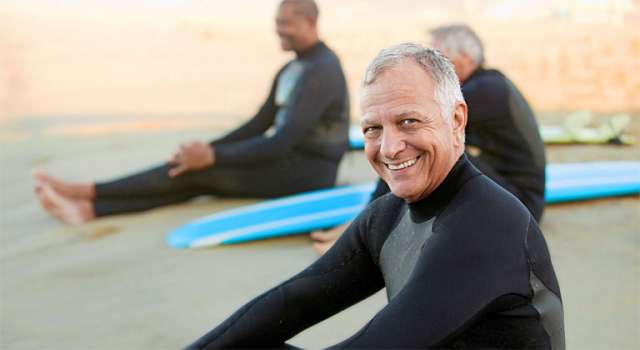Low Testosterone
Find your care
We provide men’s health care in one convenient clinic. To learn more about our services, call 310-794-7700.
The Men’s Clinic at UCLA - Low Testosterone / Hypogonadism
What is Low Testosterone?
In the U.S. today, it’s estimated that more than fifteen million adult men have low testosterone, also known as hypogonadism or low lobido. Symptoms of this condition include loss of libido, diminished frequency and quality of erections, decreased enjoyment of life, decreased ability to concentrate and decreased sports performance. Testosterone deficiency is highly associated with multiple disease states including obesity, diabetes, hypertension, high cholesterol and asthma. Hypogonadism is also seen in men taking chronic narcotics, men with chronic pain and men with a history of head trauma.

Low Testosterone / Hypogonadism: Diagnosis
Low testosterone is diagnosed through a blood test where physicians look for the level of testosterone, free testosterone, sex hormone binding globulin (SHBG,) and pituitary hormones important in male hormone production.
Low Testosterone / Hypogonadism: Treatment
Testosterone replacement therapy (TRT) can be administered in many forms. Most patients will begin their treatment process with transdermal (TD) application routes. The most common form is a gel that is applied to clean, dry skin every day at the same time, usually after a man gets out of the shower. TD application is easy, well-tolerated and allows for excellent absorption of testosterone and an even delivery of the hormone throughout the day. There are minimal side effects. Some men will have a mild skin irritation while others may see an increase in their hematocrit, which will then need to be monitored. Men on TD therapy do need to be careful not to have skin to skin contact with other individuals until the application site is washed. Most products absorb after 2 hours of skin contact so washing the area after 2 hours provides the safest way to avoid transmission of active testosterone to others.
Once starting TRT, patients should notice improved energy levels, exercise tolerance, libido and erectile function within the first few weeks of therapy. Long term results may include weight loss, especially when combined with a vigorous exercise and nutrition regimen. Optimal results will be achieved within about three to six months. Periodic symptom and blood monitoring is essential to good therapeutic response. Once your UCLA Men’s Clinic physician has you on a stable dosing regimen, he or she will check bloodwork every 6 months or so to ensure safety.
Injection therapy is another effective option. There is a lot of flexibility with injection therapy as your physician can alter the dose and schedule of injections to maximize your testosterone levels. It is a very effective therapy, but it does require the patient or patient’s partner to learn how to inject or make frequent office visits.
Scheduling an Appointment
Board-certified urologists staff The Men’s Clinic at UCLA and you can be assured you are getting an experienced physician performing your evaluation and treatment in a relaxed and comfortable environment. For more information and to schedule an appointment, please call the UCLA Urology Appointment line at 310-794-7700.